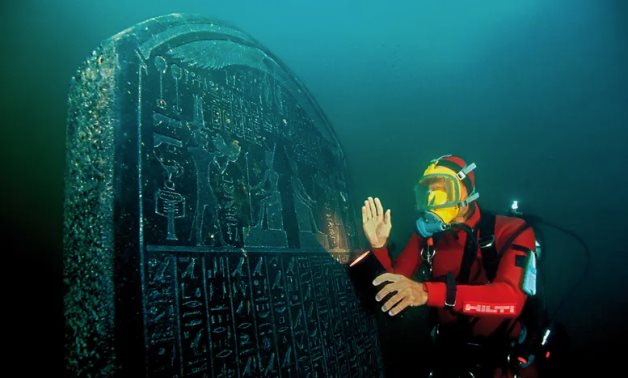
This stele reveals that Thonis (Egyptian) and Heracleion (Greek) were the same city. Photograph: Christoph Gerigk/Franck Goddio/Hilti Foundation
CAIRO – 29 May 2022: The massive monuments of Giza and the magnificent temples of Thebes bear witness to the greatness of the ancient Pharaonic cities. Yet, it was difficult to find traces of these wonderful urban centers, the once prosperous cities were shrouded in mystery until the modern era when archaeologists made some surprising discoveries.
The lost city of Thonis-Heracleion in ancient Egypt is one of the greatest submerged discoveries ever. For thousands of years, it has been hidden under water. Its existence was recorded only in a few rare inscriptions and ancient texts, according to the National Geographic website.


This port flourished at the mouth of the Nile in the seventh century BC. The port city was also known as Thonis to the Egyptians and Heracleion to the Greeks. It flourished as a vital center for trade and culture, and then disappeared when it was suddenly flooded.

The city of Heracleion was located about 32 km (20 mi) northeast of Alexandria on the Mediterranean Sea, and its remains are found in the Gulf of Abu Qir. Evidence was found at the site indicating that the city was known late in its history by its Egyptian and Greek names.
The mythical beginnings of Thonis date back to the 12th century BC and were mentioned by ancient Greek historians, and its importance grew especially during the last days of the pharaohs.
At the end of the second century BC and possibly after a severe flood, the land on which the central island of Heracleion was built underwent soil liquefaction, solid clay quickly turned into liquid and buildings collapsed in the water. A small number of residents remained in the Roman era and the beginning of the Arab conquest, but by the end of the eighth century AD, what remained of Thonis sank under water.
Comments
Leave a Comment